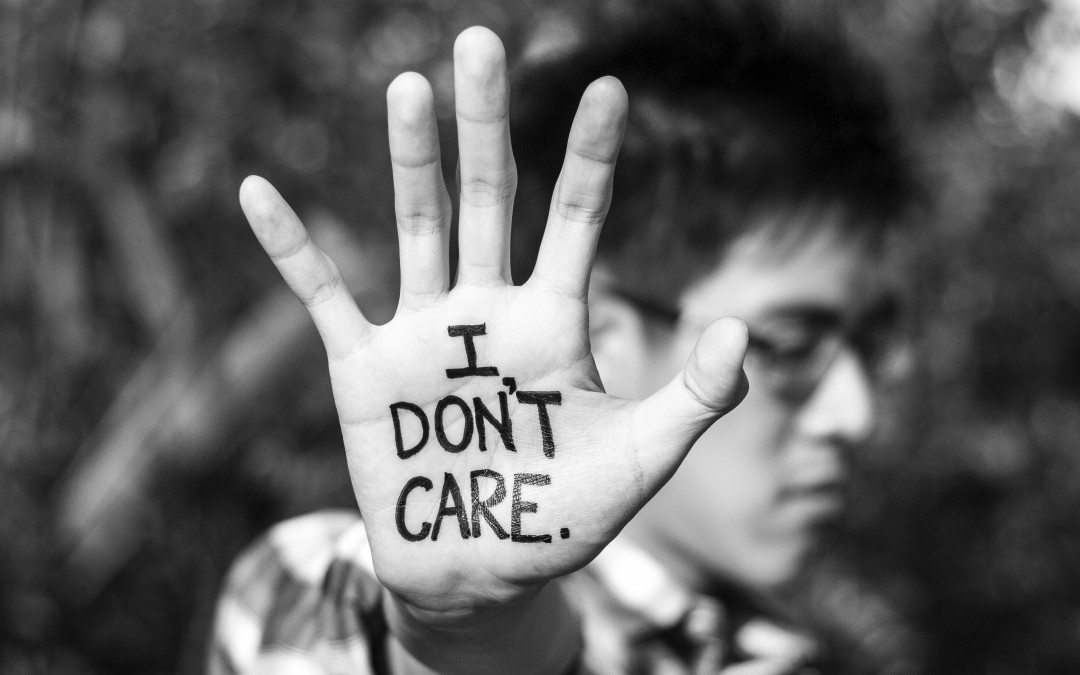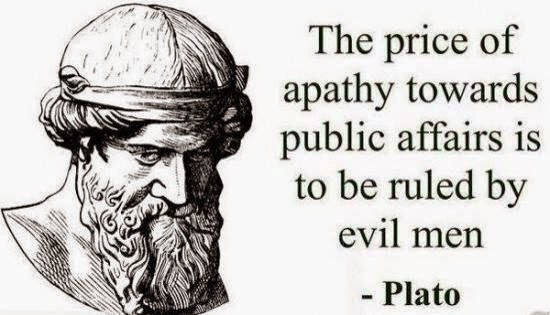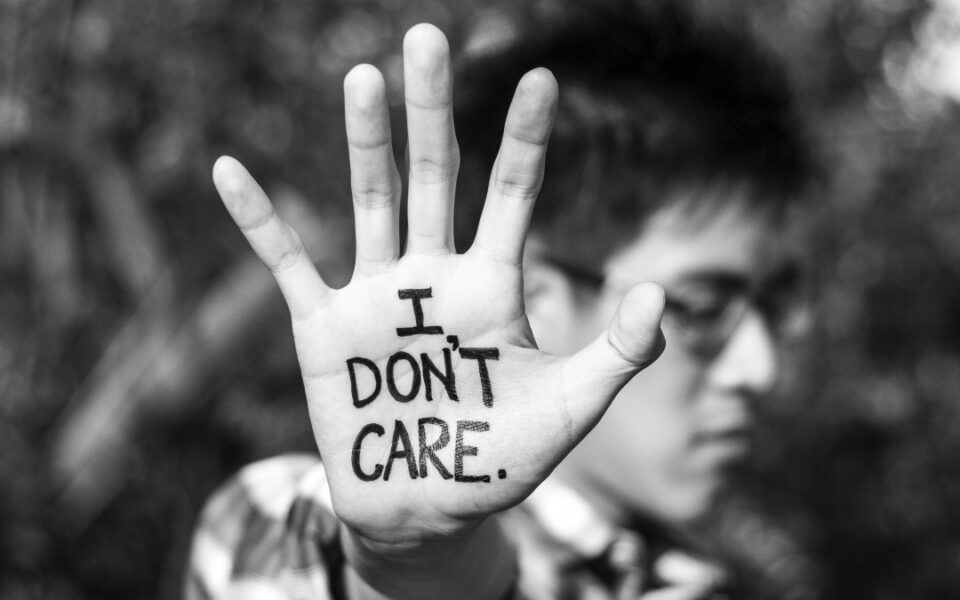A Psychopathological Perspective in Neo-Colonial Era. The thesis shall be published in 7 episodes. A detail of references shall be given in the last episode.
Apathy or Inaction: An Outcome of Helplessness?
Mass apathy around political and social issues remained an area of interest for social scientists. The focus of investigation is still on Clinical, Social and Political areas. Apathy, particularly in youth was a subject of psychological research.
In 1998 the President of American Psychological Association Seligman admitted that today’s youth are experiencing the worst demoralization we’ve had since it is being measured and linked the epidemic of alienation to lower productivity, lower initiative, and higher school absenteeism (Bjornsen, Scepansky & Suzuki 2007)
Rosenberg (1955), in his very well known article identified determinants of political apathy. The content of his article was based on interviews he conducted which revealed at least three general factors: “1) the threatening consequences of political activity, 2) the futility of political activity, and 3) the absence of spurs to interest and participation” (p.350).
Snippenberg and Scheepers (1991) in their article “Social Class and Political Behavior During a Period of  Economic Stagnation: Apathy and Radicalism in the Netherlands, 1985”, analysed how apathy and radicalization crept into the lower class people in the Netherlands in result of Economic Stagnation. The lower classes who were the worst hit of economic climate did not protest while some radical political activity took place. The interesting aspect of analysis was the one (economic stagnation) but caused two completely different consequences, Apathy and Radicalism in two different groups of society. Snippenberg and Scheepers discussed and analyzed different theories and models explaining why people do and do not protest.
Economic Stagnation: Apathy and Radicalism in the Netherlands, 1985”, analysed how apathy and radicalization crept into the lower class people in the Netherlands in result of Economic Stagnation. The lower classes who were the worst hit of economic climate did not protest while some radical political activity took place. The interesting aspect of analysis was the one (economic stagnation) but caused two completely different consequences, Apathy and Radicalism in two different groups of society. Snippenberg and Scheepers discussed and analyzed different theories and models explaining why people do and do not protest.
According to Marx and Engels, in deteriorating socio-economic conditions the have-nots would “turn to social protest and revolt” (Snippenberg and Scheepers, 1991. p.42). This is what they call as “materialistic model”. There are several examples from the history which would state the situation otherwise, instead of mass protest collective apathy untenably appeared among the lower classes. The workers in Germany in economic depression of 20s and 30s not only did not revolt but remained absent from the political scene. While some segments of middle class and economic elite remained active. The Frankfurt School addressed the deficit of Marx and Engels model by adopting Erich Fromm’s description of “authoritarian personality”. Fromm has described escape mechanisms for those individuals who are unable or unwilling to get to the full freedom through fear of separation and aloneness. He described authoritarianism as one of the escape mechanisms. Those, according to Fromm, who adopt the authoritarian solution, live a life after associating themselves with those who are in authority. They form a sadomasochistic bond with them to overcome their own sense of inadequacy (Fromm 1973). The Frankfurt School criticized Marx and Engels position by saying that membership of lower socio-economic group does not promote revolt rather develops authoritarian personality. That is why this class does not retaliate rather it stays apathetic. This class “confirms rigidly to conventional norms, and has an aggressive attitude towards trespassers of these norms. (Snippenberg and Scheepers, 1991. p.43). The third model of apathy Snippenberg and Scheepers mentioned has been given by Felling et al. The model would recognize modern society as an “achieving society” in which to achieve maximum to maintain prestige and self-esteem is the main priority. In failing to achieve a certain level on the societal ladder, feelings of “status anxiety” and “socioeconomic frustration” are caused (p.43). That develops two different and distinct psychic responses. First, repression of spontaneous desire would be a prelude to Fromm’s authoritarian personality. Second, the discrepancy between desire and achievement would generate the “feelings of powerlessness, meaninglessness and social isolation” (p. 44).
Gabennesch’s model emphasizes the lack of education as responsible for apathy. He theorized that educated people are more aware of their position and ways to enhance their influence. (Snippenberg and Scheepers, 1991). Though, modern studies on public interest in politics and voters turnout strongly reject the notion as voter’s turnout is constantly declining in countries with 90% literacy rate. (Pintor et al 2002)
Another model of political activism and/or lack of apathy Snippenberg and Scheepers mentioned came from the theory of rising expectation. This theory states in case of obstruction of desirable objectives if higher expectations are raised the situation then may lead to protest and radical political response. However, the mere obstruction would only create apathy. In case of facing obstructions in achieving objectives, with which high level of desires and expectation are attached, the protests get strong momentum. The movement in Pakistan to restore deposed Judiciary in 2009-2010 and religious terrorism both can be explained through this theoretical paradigm.
Political apathy has another dimension, which can be measured achieve by participation; least of it would be casting the vote in elections. McVeigh and Smith (1991) used a spectrum approach to analyse the situation between inaction, institutionalized politics and protest. They call them as “political  alternatives” to people. They found people with higher income levels more inclined to go for institutionalized politics than inaction or protest. The higher education induces skepticism around political institutions that is why highly educated people would tend to participate more in social protest. Those who try to educate themselves on politics and related issues are more likely to participate in institutionalized politics and protests. Those who do not attempt or do not get any opportunity to educate themselves on political issues are more likely to remain inactive. McVeigh and Smith referred to a term coined by Oberscall “bloc recruitment” of protesters, which are already highly organized but for some other reasons, purposes and objectives. For the sake of social mobilization, members of highly organized and cohesive groups are recruited instead of running a campaign for individual recruitment. (Oberschall, 1973)
alternatives” to people. They found people with higher income levels more inclined to go for institutionalized politics than inaction or protest. The higher education induces skepticism around political institutions that is why highly educated people would tend to participate more in social protest. Those who try to educate themselves on politics and related issues are more likely to participate in institutionalized politics and protests. Those who do not attempt or do not get any opportunity to educate themselves on political issues are more likely to remain inactive. McVeigh and Smith referred to a term coined by Oberscall “bloc recruitment” of protesters, which are already highly organized but for some other reasons, purposes and objectives. For the sake of social mobilization, members of highly organized and cohesive groups are recruited instead of running a campaign for individual recruitment. (Oberschall, 1973)
Declining turnout of voters in elections is a source of concern for established democracies of the world. It has been understood as mandatory for the citizens of a Democratic country to vote in elections but it is on the decline (Table 2). Does this decline indicate people’s
(Table: 2) Voters Turnout in last three elections
| Country | Year | Voters Turnout |
| France | 2007 | 59.98% |
| 2002 | 60.32% | |
| 1997 | 67.96% | |
| Germany | 2009 | 70.78% |
| 2005 | 77.65% | |
| 2002 | 79.08% | |
| Switzerland | 2007 | 48.28% |
| 2003 | 45.22% | |
| 1999 | 43.22% | |
| United Kingdom | 2010 | 65.77% |
| 2005 | 61.36% | |
| 2001 | 59.38% | |
| United States | 2008 | 64.36% |
| 2004 | 68.75% | |
| 2000 | 63.76 | |
| India | 2009 | 58.19% |
| 2004 | 57.75% | |
| 1999 | 59.73% | |
| Pakistan | 2008 | 44.55% |
| 2002 | 41.80% | |
| 1997 | 35.17% |
lack of interest in politics, their insensitivity, lack of concern in political activity or it is simply a sign of political apathy? Since the phenomenon is rife, both economists and psychologists studied it. Quattrone and Tversky (1988), found it more a psychological phenomenon than an economic one. Serbanscue (2002), studied low turnout in 1999 elections for the European Parliament, it sheds more light on the phenomenon and makes some relevance to the case study of Pakistan. Slightly more than the 50% of eligible voters cast their ballots in this election. The major factor identified in the study was the little power of decision making lied with the representatives, people were asked to elect. While, those who held the major power share were neither connected with nor answerable to people. Concentration of power not only damages voters’ confidence but also the repute of institutions people are asked to vote for. “Presidential elections in the US is ranked 20th out of 21 in voter turnout among established democracies” Vaden, Ahmad and Perry (in an undated presentation) discussed the low turnout in the 2004 presidential elections in the US and identified five most common reasons for that. 1) Not enough fine line between candidates/ parties on issues, 2) the incapability of single vote to determine the outcome, 3), people do not trust the candidate due to the involvement of financial sector and their funding the campaigns 4) people’s knowledge about politician’s lack of power and control, 5) voters get more disinterested on the loosing of their favoured candidates.
In the last elections held in Pakistan (in 2008) the voters’ turnout was higher in comparison with previous two elections, though still below 50%. That can be there due to some other socio-politico-economic reasons specific to Pakistan but probability of some similar reasons mentioned in the three studies is still not ignorable.
Note: The Article has been published before and has not been updated.
Previous episode: https://dialoguetimes.com/akhter-ali-syed-2/
Dr. Akhter Ali Syed is a famous Psychologist and writer. He is currently working in Ireland as Principal Psychologist. He also has a keen interest in Philosophy, religions, History and Humanity.




